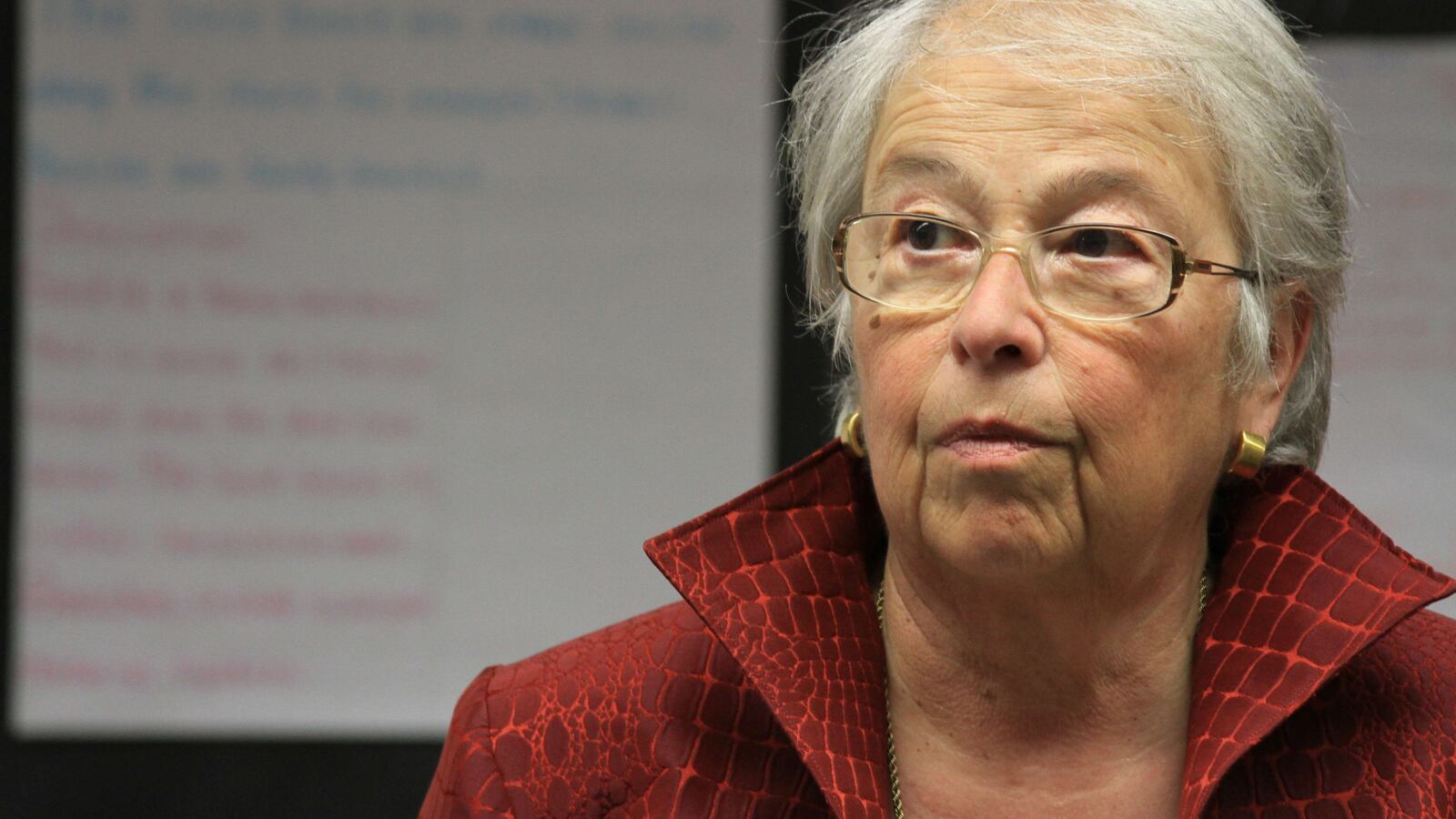Members of Mayor Bill de Blasio’s policymaking board unanimously voted in favor of merging together two sets of schools, a strategy his administration hopes can be used to boost schools that have struggled due to low enrollment.
Chancellor Carmen Farina defended the plans, which will consolidate schools in East Harlem and Crown Heights, at a meeting before the vote Thursday night. In response to concerns raised by parents, Fariña framed the plan as a fix for schools that are suffering from limited resources due to their dwindling number of students, since funding is based on enrollment.
Fariña said the schools are currently struggling to afford basic staff and services, such as guidance counselors, art teachers or extracurricular programs. A merger would let them pool their resources.
“It doesn’t make sense for those schools to exist alone,” Fariña said.
“This is not about saving money,” she added. “This is about giving students more resources.”
But Fariña also sees the mergers as a school-improvement strategy, where a higher-performing school absorbs a weaker one. That is her hope for M.S. 354 and M.S. 334, two co-located middle schools in Crown Heights that serve similar student populations but post significantly different test scores. Fariña has appointed the principal of the higher-performing school, M.S. 354, to take over both schools this year ahead of the official consolidation.
For the other merger approved Thursday night, both schools have struggled. Enrollment at both schools, Global Neighborhood Secondary School and P.S. 96, has decreased for years. Competition from a growing number of charter schools in the area and a decline in school-aged children have contributed to their enrollment woes.
She also stressed her belief that turning the two schools into one would more easily allow them to trade and share their unique offerings, whether it’s an extra art teacher or an after-school science program.
“Our hope is that by putting two schools together—and typically they’re in the same building—the students will have twice as many choices, twice as many resources,” she said.
Fariña said the transition at M.S. 354-M.S. 334, whose merger was announced in April, has so far been smooth. It’s been bumpier for the East Harlem schools.
To prepare for their merger, officials moved Global Neighborhood, a middle school, into the building occupied by P.S. 96, a kindergarten through eighth grade school. Officials estimate that between 506 and 596 students will attend the merged school next year.
At Thursday night’s meeting, a parent at Global Neighborhood Secondary School said she and many other parents at the school planned to transfer their children out of the school because they did not support the merger plan. They said that the new space-sharing arrangement and pending consolidation had caused tension with parents and students at both schools.
“Our kids don’t feel comfortable,” said Yvonne Figueroa, president of the Global Neighborhood Parent-Teacher Association. “If you come and speak to our children they’ll tell you they don’t approve of it.”
Fariña said she was open to keeping some version of the Global Neighborhood name in the newly-configured school, but insisted that the mergers were an improvement. Two more merger plans will be voted on next month, and city officials say more proposals are in the works.
“I really see this as a win-win,” Fariña said.
All 12 members of the city’s Panel for Educational Policy, whose majority is controlled by de Blasio, voted to approve the plans.
The panel also voted 7-3 with two members abstaining in favor of a plan to give space to Success Academy Charter School inside a building that already houses two district schools on Far Rockaway in Queens. It is the first Success Academy plan voted on since the panel rejected a Success Academy colocation in June.

